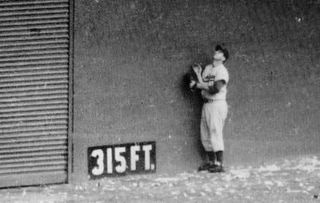The French Revolution constituted for the conscience of the dominant aristocratic class a fall from innocence, and upturning of the natural chain of events that resounded all over Europe; the old regime became, in their imaginary, a paradise lost. This explains why some romantic poets born in the higher classes were keen on seeing themselves as faded aristocrats, expelled from their comfortable milieu by a reverse of fortune or a design of destiny. Byron and Shelley are the prime instances of this vital pose. In The Giaour he writes on a vampiric character: "The common crowd but see the gloom/ Of wayward deeds and fitting doom;/ The close observer can espy/A noble soul, and lineage high."
Byron departed from England leaving a trail of scandal over his marital conduct and since then saw himself as an exiled expatriate. Shelley was expelled from Oxford and he fell in disgrace by marrying an in-keeper’s daughter; he always struggled to reconcile his origin with his political ideas: "Shelley could find no way of resolving his own contradictory opinions" (Cronin, 2000).
This icon of the fallen aristocrat is rooted on another character revered by romantic poets: the fallen angel. As Mario Praz proves, miltonic Satan became the rebel figure of choice among romantic poets. Milton reversed the medieval idea of a hideous Satan and wrapped its figure with the epic grandeur of an angel fallen in disgrace. Many of the byronic heroes share with Milton’s Satan this fallen-from-grace condition, such as Lara: "There was in him a vital scorn of all:/
As if the worst had fall'n which could befall,/ stood a stranger in this breathing world,/An erring spirit from another hurl’d" ( Lara XVIII 315-16)
There is another social factor that is behind the formation of the romantic myth of the vampire. In the early nineteen century, the foundations of what would later become a mass society were laid; the expansion of the press and of the reading public produced an increased diffusion for literary works and fostered movements such as the Gothic and the sensation novel. Byron himself experienced the event of being turned into a proto-bestseller. The unification of literary taste and preferences that was a correlate to these social changes could not be more alien to the romantic notion of individual gusto and original sensibility. In order to combat these unifying forces, romantic poets revered the individual who stands outside society and is free from common concerns. Many of Byron’s heroes look down on the masses from above, even though they walk among them and do not lean towards wordsworthian escapades into nature; they achieve to remain untainted by the masses in a sort of exile within the world akin to that of a ghost or a dammed spirit. This self-definition of Manfred is revelatory:
"From my youth upwards
My spirit walk’d not with the souls of men,
Nor look’d upon the earth with human eyes;
The thirst of their ambition was not mine,
The aim of their existence was not mine;
My joys, my griefs, my passions, and my powers
Made me a stranger; though I wore the form,
I had no sympathy with breathing flesh, (Manfred II, ii, 50-58)"
Not only Byron’s works contrived to produce the modern image of the vampire in relation to the Male Seducer archetype, but also some odd events in his life and the life of those surrounding him exercised a decisive influence. A critical study bundled with an anthology of vampire tales (Conde de Siruela, 2001) attributes to the short story The Vampire (1819) by John William Polidori the fixation of the "classical images of the literary vampire as a villanious, cold and enigmatic aristocrat; but, above all, perverse and fascinating for women". Mario Praz, in the same line, also states that Byron was "largely responsible for the vogue of vampirism". Polidori was the unfortunate doctor and personal assistant of Lord Byron who died half-crazy at 25. The idea for the tale published in 1819 came from the famous meetings at Villa Diodati on June 1816 between Byron, Percy Shelley, Mary Shelley and Polidori, in what was probably the most influential gathering for fantastic fiction in the history of modern literature. In order to pass the stormy and ether-fuelled nights, they agreed to write each one a ghost story. Mary Shelley (who was then 17 years old) got during these nights the idea of what later became Frankenstein and Polidori wrote the tale The Vampire that he would publish three years later. The story appeared in the New Monthly Magazine falsely attributed by the editor to Lord Byron (taking advantages of the aura of Satanism that surrounded the poet in the popular view to promote the sales of the magazine). A misguided Goethe hailed the story as the best that Lord Byron had ever written. The tale was, actually, a covert portrait of Lord Byron disguised as the vampire Lord Ruthven, a cruel gambler and killer of innocent girls. Polidori had introduced in the story fragments from an autobiographical and revengeful novel called Glenarvon written by Caroline Lamb, an ex-lover of Byron. The Lord´s reaction was a threat to the editor and the denouncing of a commercial imposture with his name. Eventually Stoker´s Dracula (1897) blended, according to Siruela (2001), this tradition derived from Polidori´s Lord Ruthven with some old romano-hungarian tales of wandering dead and enchanted castles, fixating thus the modern images of the vampire.
The vampire is closely linked to another romantic archetype: the dissatisfied lover. Rafael Argullol summarizes its traits: "el enamorado romántico reconoce en la consumación amorosa el punto de inflexión a partir del cual la pasión muestra su faz desposedora y exterminadora.", i.e. the romantic lover begins to feel a sense of dissatisfaction and mortality at the very moment when his passion is fulfilled. This feeling prompts him to embark in a sentimental roller-coaster where each peak of satisfaction is followed by a valley of despair and the impulse to seek satisfaction in a new object of love in order to renew the faded passion (the extreme of this attitude is the character of Don Juan). The vampire goes one step further than the seducer: for him the loved one stands as an image of his own dissatisfaction and it must be destroyed at the very moment when the longing for her disappears; at the instant of consummation. Again Byron in Manfred expresses this transference, which Argullol opportunely labels as romantic self-mirroring: "I loved her, and destroy'd her! (211)". Keats conveys in his Ode on Melancholy the feeling of mortality that is hidden in the moment of pleasure for the romantic: "Turning to poison while the bee-mouth sips:/ Ay, in the very temple of Delight/Veil'd Melancholy has her sovran shrine,/ Though seen of none save him whose strenuous tongue/Can burst Joy's grape against his palate fine". La belle dame sans merci is according to Argullol also a poem where "vida y muerte se vivifican y complementan mutuamente [...] se hallan en total simbiosis". But there is a crucial difference between Byron and Keats in their approach to the fatal lover: Byron’s characters are fatal males, epitomized in the vampire, while Keats’ characters are femmes fatales. This difference underlines a different attitude to gender issues: Byron liked to emanate a dominant masculinity which is imprinted in all his leading characters. Keats, however, had a passive approach to love, his poetic personas like to be seduced even if that means, as we have seen, to be killed. Byron is the male aristocrat who thinks all women are naturally his, they are his possessions and, as such, disposable at will. Keats, who disliked Byron’s Don Juan - in a letter to his brother, he referred to it as "Lord Byron's last flash poem", announces a more modern and non-patriarchal approach to love where the woman is free to be the seducer. Nevertheless, as we have seen, they both share the extreme notion of love as creation and destruction at the same time; and their characters, though of different gender, are vampire lovers. This different attitude is not only personal but it mirrors a wider and epochal distinction. Mario Praz has observed how the fatal and cruel lovers of the first half of the nineteenth century are chiefly males, while in the second half of the century the roles are gradually inverted until late century decadentism is dominated by femmes fatales. This literary process mirrors the advancement of social changes throughout the century, and the slow but continuous emancipation of love from patriarchal standards. Gender issues shift focus, but power and domination remain at the core of the portrayals of love even in the fully bourgeoisie society of the late nineteenth century. Goodland (2000) has explored the role of women as a redundant class subject to another classes and the gender/class dialectic found in the vampire.
Not only Byron and Keats were fascinated by the myth of the vampire, but we can find its presence in most romantic poets, even in the proto-romantic early Goethe. A list of authors who use such characters made by Twitchell (1981) comprises: Southey in Thalaba the destroyer, Coleridge in Christabel and Wordsworth in The Leech Gatherer.
As we have seen throughout this paper the figure of the vampire is shaped in the romantic period under the form of an ideological knot where many social forces converge: the French Revolution, an embryonic mass society, the decline of aristocracy and the gradual shifting apart of gender divisions from the patriarchal model. Therefore, it constitutes a myth that may be read as a battleground for the play of discourses of its era, shedding light on other romantic attitudes towards existence. As such it is subject to an analysis that, as new historicism maintain, is aware of the historicity of a text and the textuality of history.
------------------
Technology News


